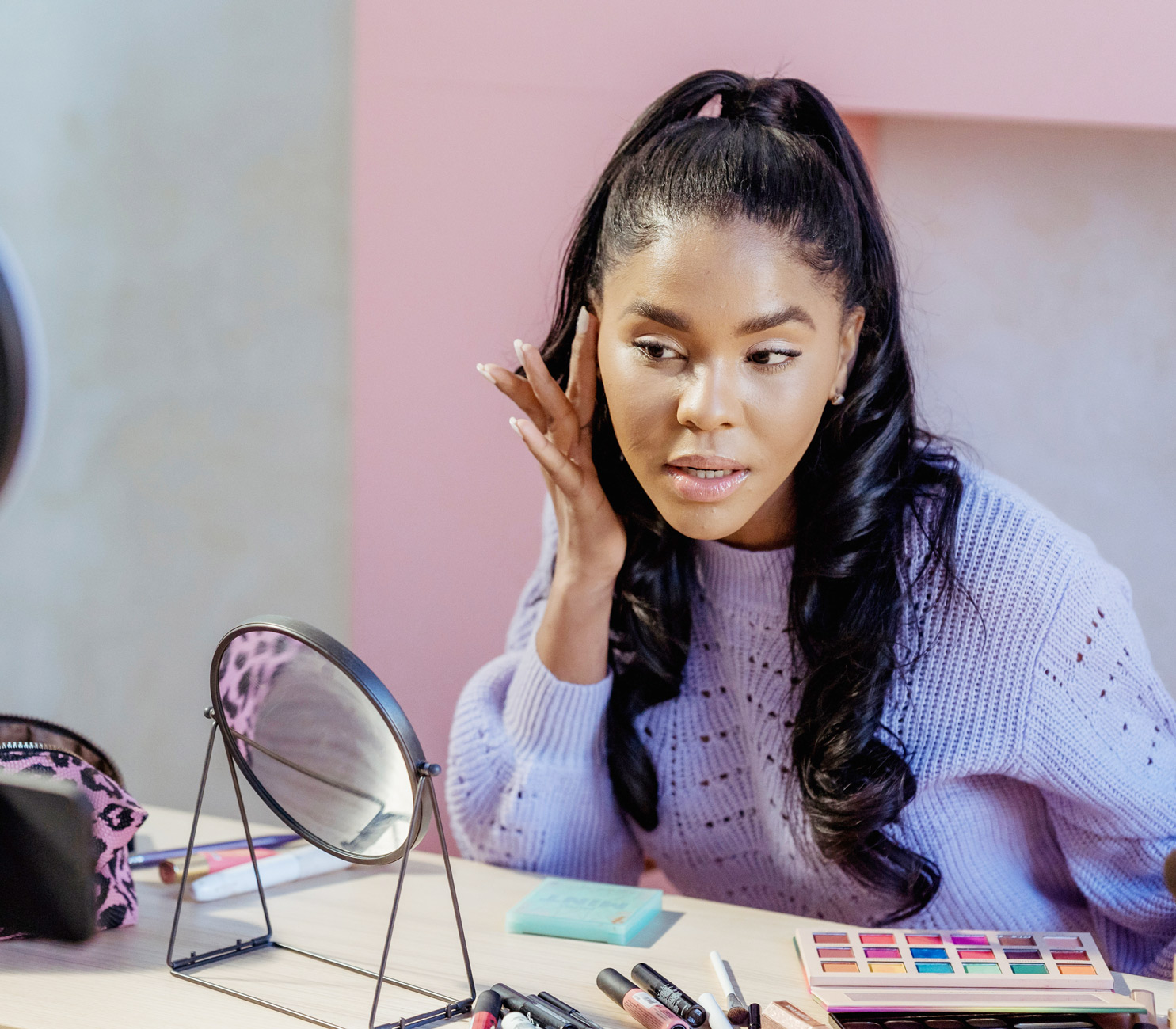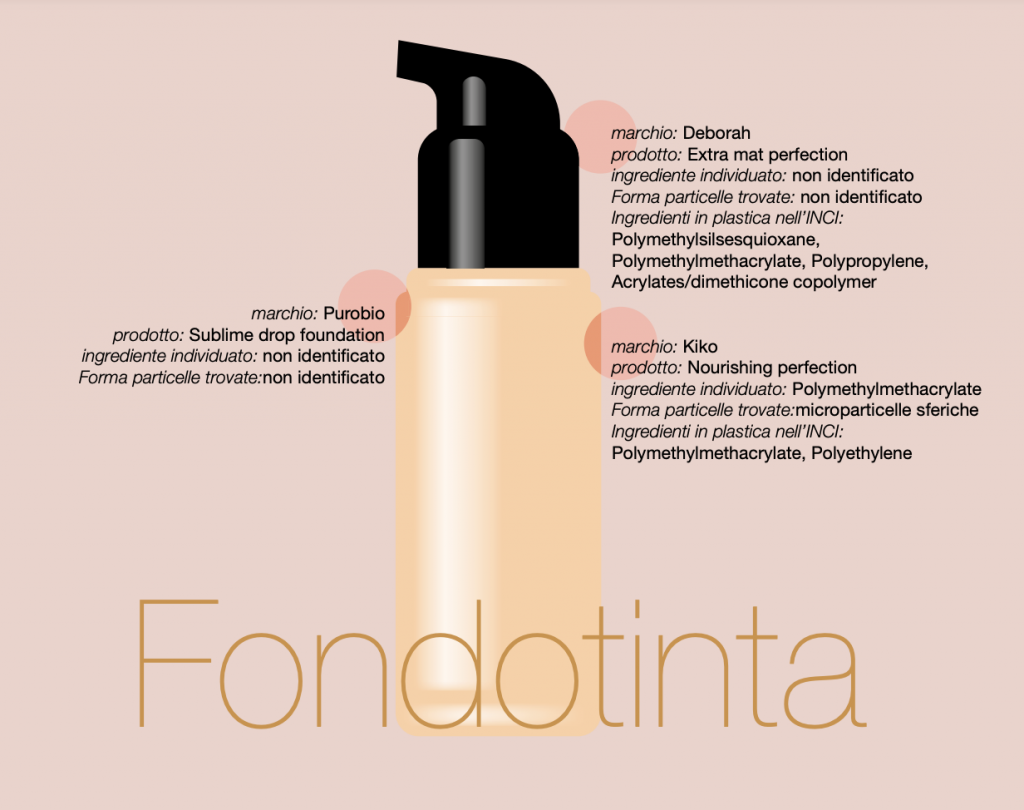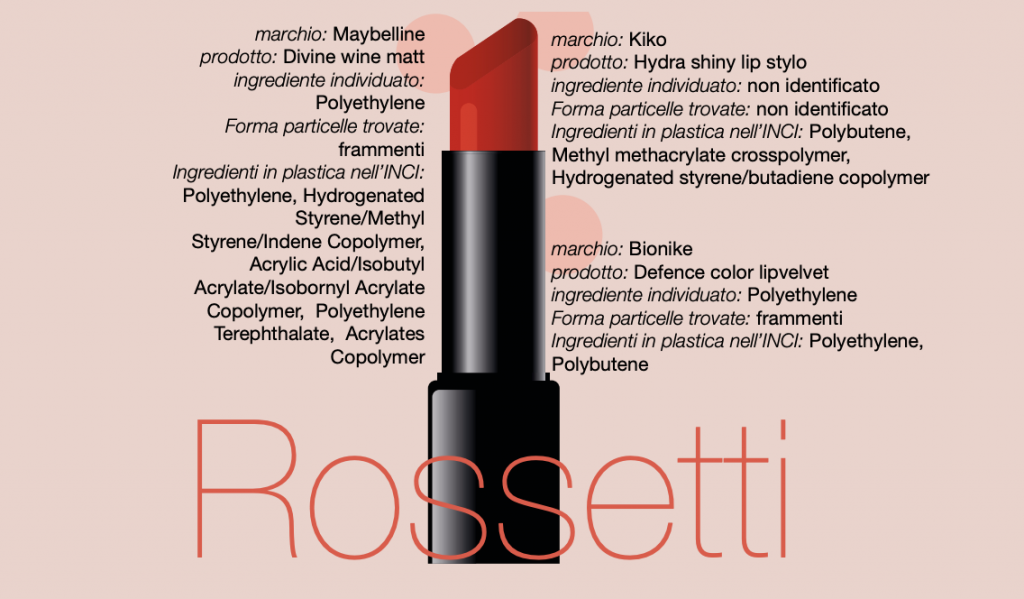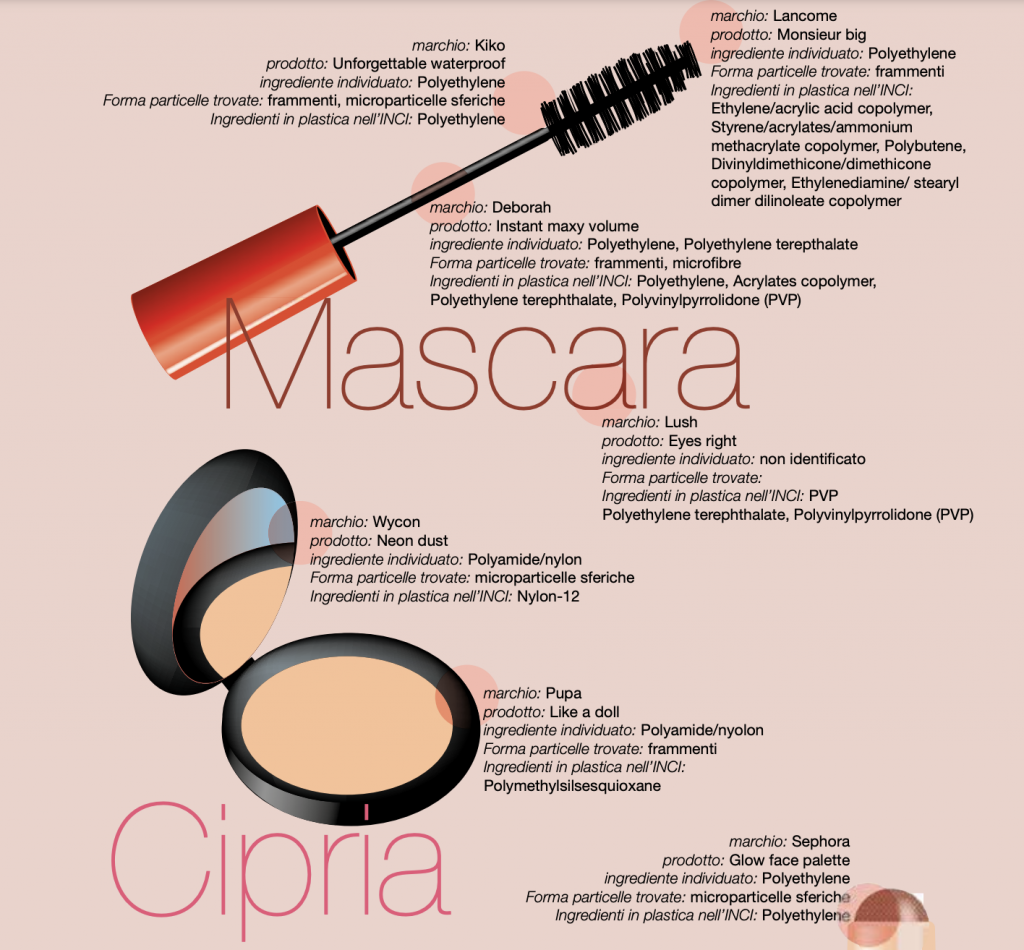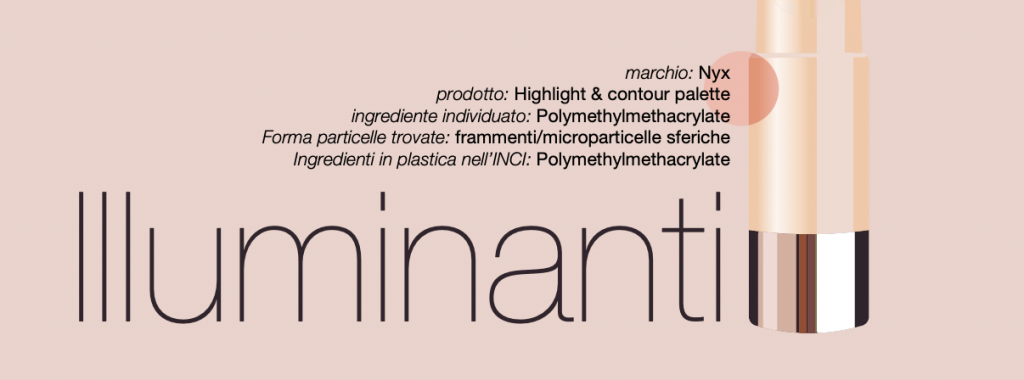The deception of makeup companies
Perhaps during the pandemic it was easier to forget about a serious problem: the environmental crisis and plastic pollution.
An emblematic case is represented by many commonly used products such as makeup products. This is why it is important to be aware of the Greenpeace report.
MICROPLASTICS
When we talk about microplastics, we mean solid, insoluble plastic particles with a size of less than 5 millimeters. These are used in various types of products: detergents, cosmetics, paints, agricultural fertilizers and filling materials for synthetic turf sports fields. It is important to point out that their use is emblematic of the approach of companies that continue to use them in numerous products without regulation. The problem is that they are aware that these particles, after being used, contaminate the Planet for years. In fact, they are almost impossible to remove so we must stop producing and using them.
Plastic and makeup hide-and-seek: REGULATIONS
As of January 2018, the European Chemicals Agency (ECHA) has developed a proposed restriction on the use of microplastics added in products.
Unfortunately, due to pressure from industrial lobbies, the ECHA proposal has undergone several changes and, to date, is weaker than before. In particular, it is explained as follows: • postponing the entry into force of the restriction to 2022; • inserting derogations for the coming into force of the legislation for some product categories: in 2026 for rinse-off cosmetics (already banned in Italy, by the way), in 2028 for makeup products.
This would mean that companies would go ahead and use particles that are potentially dangerous to human and planet health.
The cosmetic industries justify the requested time extension with the excessive costs they would have to incur to modify the formulations of their products.
THE MAKEUP INDUSTRY IN ITALY
Renato Ancorotti (president of Cosmetica Italia) states, “65% of makeup in Europe is Italian” and 55% of the world’s makeup comes from Italian companies. There are almost 600 Italian companies operating in the sector (members of the Cosmetica Italia association).
As the Cosmetica Italia report from the end of 2019 shows, the Italian cosmetics industry has revenues of no small importance. Here are the numbers; 7 billion euros for domestic consumption and more than 4 billion with exports. Cosmetica Italia statistics also show a 40% increase in online purchases of cosmetic products. This figure is the result of the pandemic and lockdown that characterized 2020. Another interesting fact, is the increasing attention by companies to the sustainability of their products.
Plastic and makeup hide-and-seek; THE GREENPEACE RESEARCH
Regulations 21, 22 force companies to state the list of ingredients (according to INCI nomenclature: International Nomenclature of Cosmetic Ingredients) on the packaging. Unfortunately, the regulations are vague for cosmetics regarding the responsibility to highlight the INCI even on online sales platforms. A change in this regard would be more than appropriate.
The research, which analyzed 672 products online, found that 79% had at least one plastic ingredient and about 38% of these had plastic ingredients. Out of the 11 brands surveyed, only Purobio’s products did not show the presence of plastic ingredients, while for LUSH, the highest percentage was found (99% of its products). However, Lush is aware of the use of this ingredient and its identity: in fact, in a very transparent way, it communicates it on its website. In addition, they have also stated that they intend to replace plastic ingredients with alternative substances.
PRODUCTS AND PLASTICS; WHERE DO THEY HIDE?
Plastic ingredients in products range from 67% to 85%. Furthermore, the most frequently affected product categories are mascaras 90%, followed by lipsticks and lip glosses 85%, foundations 74%, highlighers 69% and powders 43%. Microplastics are most present in lipsticks and lip glosses 56%, followed by mascaras 36%, highlighters 31%, powders 28% and foundations with 19%.
More precisely, 5 most frequent plastics were identified. Polyvinylpyrrolidone (PVP) found in 139 products, Polyethylene in 132 products, Polybutene in 115 products, Trimethylsiloxysilicate in 78 products and Nylon-12 in 58 products. The most appalling thing is that in the products applied on eyes and lips, plastics (solid and non-solid) are more common.
Plastic and makeup hide-and-seek; why are plastic ingredients used?
Plastic ingredients are thickeners, get the right degree of viscosity, a shimmering or matting effect, and finally, improve softness to the touch, the appearance.
However, a question that arises is whether there are natural substitutes to get the same result. Obviously yes: starch, Guar gum, carrageenan, alginates, polysaccharides, pectin, agar and cellulose derivatives are just some of them. To support this, there are already companies in the cosmetics and makeup industry that do not use plastic ingredients.
As further proof, the Dutch environmental organization Plastic Soup Foundation‘s “Beat the Microbead” campaign has identified over 2,000 cosmetic products in the European market that are plastic-free. This is overwhelming evidence of how companies can do without plastic ingredients in their products.
A radical change of course is needed to survive. The first step? Stop using and producing microplastics. In this way we would immediately reduce a part of the plastics that are dispersed into the environment every day. In order to do this, though, we need commitment and accountability from companies and governments. The government must be strong enough to support the European proposal to ban the use of intentionally added microplastics in all products.
It is also necessary that companies, being aware of the indiscriminate use of plastic in their products, immediately choose safer alternatives.


